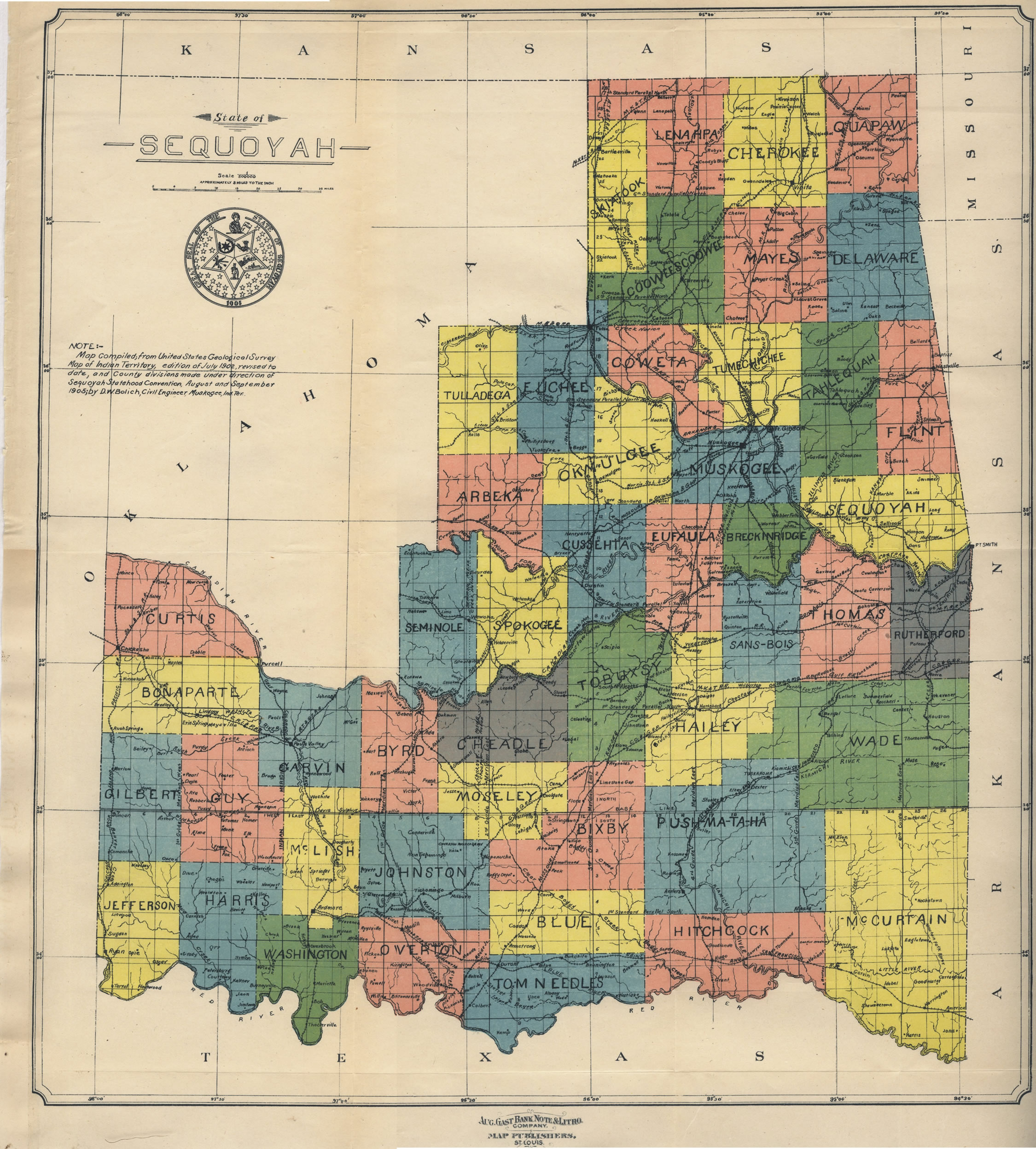|
Moderated by NW Okie! |
Volume 9 , Issue 352007Weekly eZine: (374 subscribers)Subscribe | Unsubscribe Using Desktop... |
OkieLegacy Centennial Moment

Proposed State of Sequoyah w/48 Counties --
What would have life been like IF... Oklahoma and Indian Territories would have been allowed to entered as two states in 1907 instead of the merging marriage of the 46th State of the Union? IF So... would there have been a 46th State called "Sequoyah" and a 47th State called "Oklahoma" OR... vice-versa? How would that have affected the States added afterwards? IF So... Which State would you and your ancestors residing ... Then & Now?
I subscribe to a Southern Oklahoma online weekly newsletter called the This & That Newsletter that had a link to an old 1902/1905 map for the proposed State of Sequoyah. What a great find and interesting old map. It made we start wondering... "What If...?" So... I did some additional research online for more information and found some interesting little tidbits for this week's Centennial Moment.
Looking at the old map of Sequoyah you can see that the Eastern parts of the State (where most of the mountains, lakes, streams and trees reside) there were 48 counties that made up Sequoyah (Indian Territory). They were as follows: Arbeka, Bixby, Blue, Bonaparte, Breckinridge, Byrd, Cheadle, Cherokee, Cooweescoowee, Coweta, Curtis, Cussehta, Delaware, Eufaula, Euchee, Flint, Garvin, Gilbert, Guy, Hailey, Harris, Hitchcock, Jefferson, Johnston, Lenahpa, Mayes, McCurtain, McLish, Moseley, Muskogee, Okmulgee, Overton, Pushmataha, Quapaw, Rutherford, Sans-Bols, Seminole, Sequoyah, Spokogee, Skiatook, Thomas, Tobuxsy, Tom Needles, Tahlequah, Tulldega, Tumechichee, Wade, Washington.
According to Strangemaps.wordpress.com, "In 1890, the 1866 treaty lands plus No Man's Land (nowadays known as the Oklahoma Panhandle) were joined into the Oklahoma Territory. The eastern part of present-day Oklahoma remained Indian Territory. In a convention at Eufaula in 1902, representatives of the Five Civilized Tribes started a drive towards statehood for the Indian Territory. The name for their proposed state was Sequoyah, named for a prominent Cherokee Indian, the man who devised the Cherokee alphabet."
It was in 1903, that delegates met once again to organize a constitutional convention which finally met at Muskogee in 1905.
General Pleasant Porter, Principal Chief of the Creek Nation presided over this 1905 constitutional convention. The website went on to say, "Vice-presidents were the high representatives of each of the five 'civilized tribes': William C. Rogers (Cherokee), William H. Murray (Chickasaw), Green McCurtain (Choctaw), John Brown (Seminole) and Charles N. Haskell (Creek)."
That wesite stated that IF... "Sequoyah never achieved statehood, it wasn't for the efforts of the Convention. It drafted a constitution, established county boundaries for the new state, elected delegates to petition the US Congress for statehood and saw its proposals overwhelmingly endorsed in a referendum held in Indian Territory."
BUT... Politics as usual set the standard procedure in the early days of statehood for Oklahoma. Eastern politicians pressured the US President Theodore Roosevelt against admitting two Western states, Sequoyah and Oklahoma, into the Union. The Eastern politicians feared this would "disproportionally diminish Eastern states' political influence."
President Roosevelt caved into the politics and made the decision that both territories, Oklahoma & Sequoyah (Indian Territory) could only enter the Union as a single state (Oklahoma).
Indian Territory representatives had a big influence in establishing Oklahoma with the groundwork for their own state of Sequoyah. The Sequoyah Constitution was used as the basis for Oklahoma's constitution when it was admitted as the 46th state, November 16, 1907.
| View or Add Comments (1 Comments)
| Receive
updates ( subscribers) |
Unsubscribe
| © . Linda Mcgill Wagner - began © 1999 Contact Me | |
